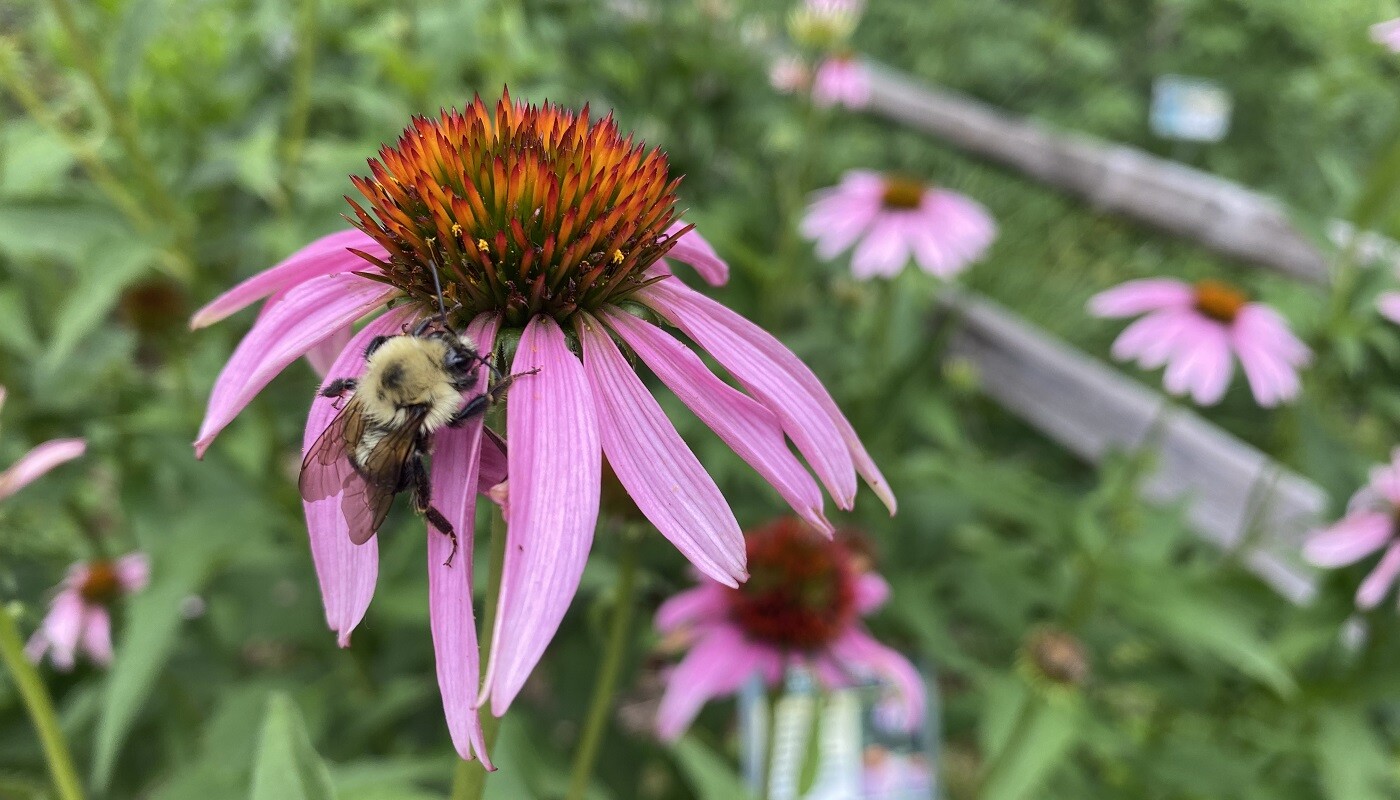Imagine you’re a bee: the sun is shining, and the air is filled with the sweet aroma of wildflowers, waiting patiently for pollinators—like you!—to complete their task. You and the other bees are on a mission to collect nectar and pollen, while unknowingly transferring pollen from one flower to another.
Believe it or not, a creature as tiny as a bee plays a vital role in a large supply of the natural food chain. Bees support a vast majority of human food systems, as well. Many crops, including fruits, vegetables, nuts and oilseeds, rely on bee pollination for optimal yields and quality. Without these critters, we would have a decline in food resources and the world would drastically change with disruptions to food webs and the altering of ecosystems.
The process of pollination involves the collection of nectar and pollen from the male parts (anthers) of flowers, which is then transferred to the female parts (stigma) of flowers. Pollination allows for the fertilization of plants that in return, produce seeds, fruit and new plants–more food that new generations of pollinators can rely on. Bee pollination promotes genetic diversity of plant populations, which is crucial for the food supply of wildlife.
For bee species native to Cook County, their existence depends on continuing to protect and preserve their habitats. Their behaviors, adaptations and pollination efforts weave together a like a delicate web to ensure the smooth functioning of our ecosystems. Here are some fun facts about some of our native bees:
- Bumblebees are known for their large size, fuzzy appearance and ability to perform buzz pollination. Buzz pollination is the ability of a bee to release pollen from a plant’s anthers alone. High frequency vibrations from their flight muscles helps them release pollen from flowers that are especially reliant on this type of pollination.
- Mining bees—a group of bees with hundreds of different species—are ground-nesting solitary bees. They are focused on foraging rather than defending their nests. Each female creates her own nest chamber in the ground, where she lays her eggs and provides pollen and nectar for the developing larvae.
- Mason bees are solitary bees that nest in pre-existing cavities—including hollow stems, snail shells or small holes in wood—or create nests using mud or plant materials. They also use mud or plant materials to partition their nests and create individual chambers for each egg, earning them their name. Unlike honeybees or bumblebees, these bees do not produce honey or live in large colonies. Each female mason bee is responsible for sealing her own nest chambers.
Want to learn more about bees? Visit our River Trail Nature Center on August 27 for a Buzz on Bees program or head to any of our nature centers to talk to a naturalist.

